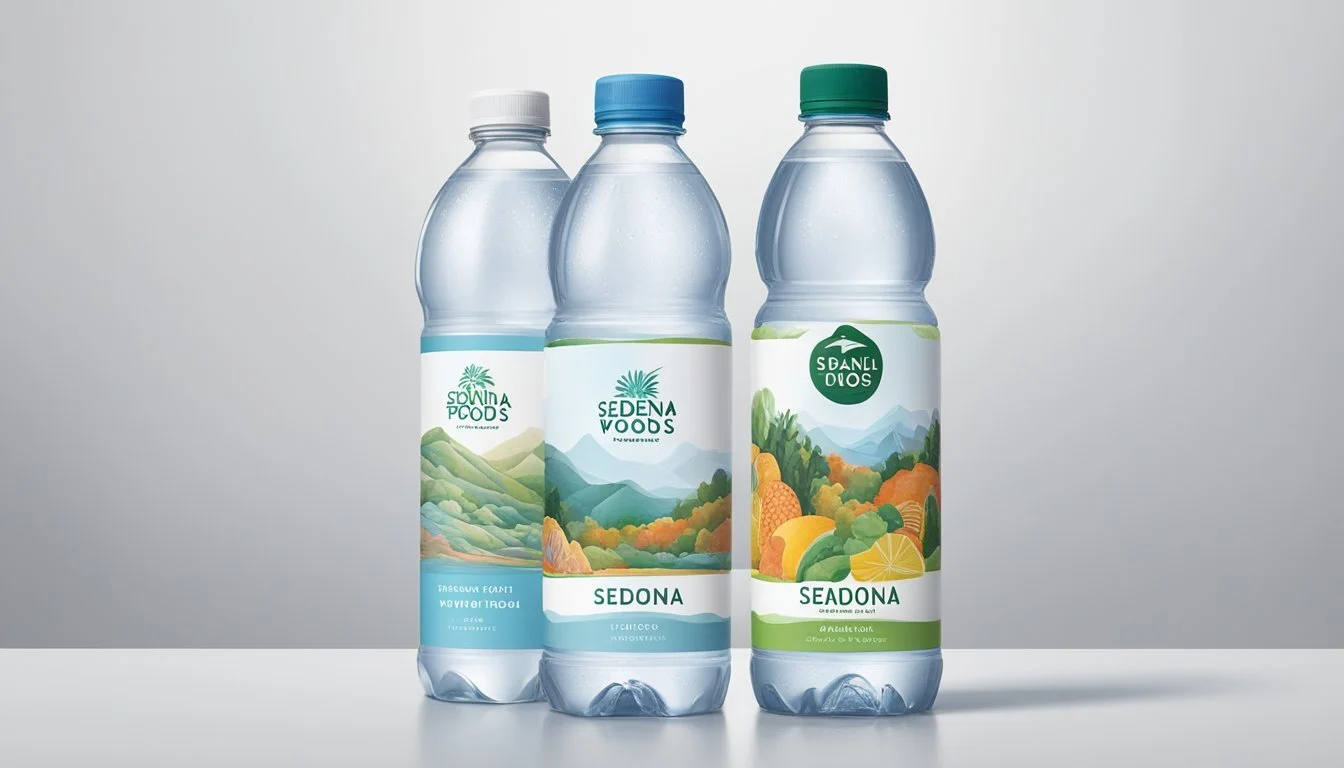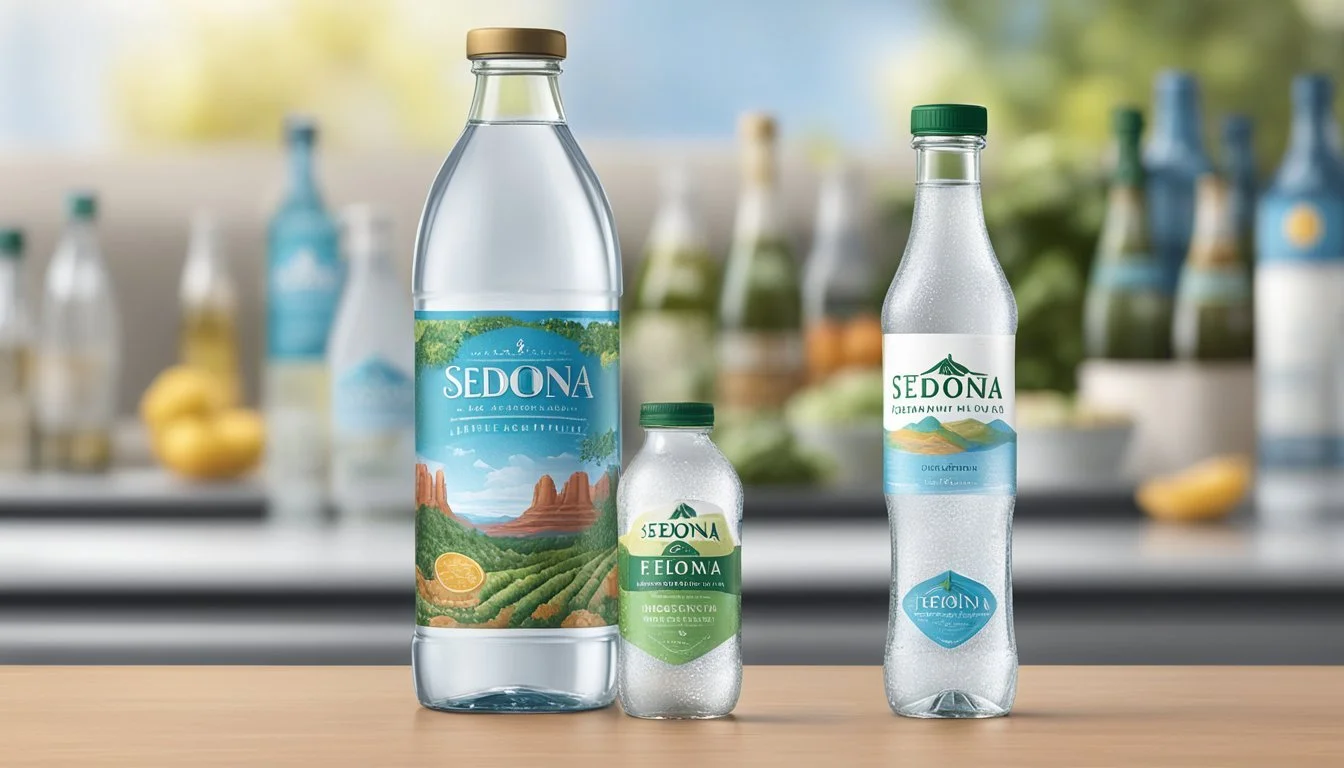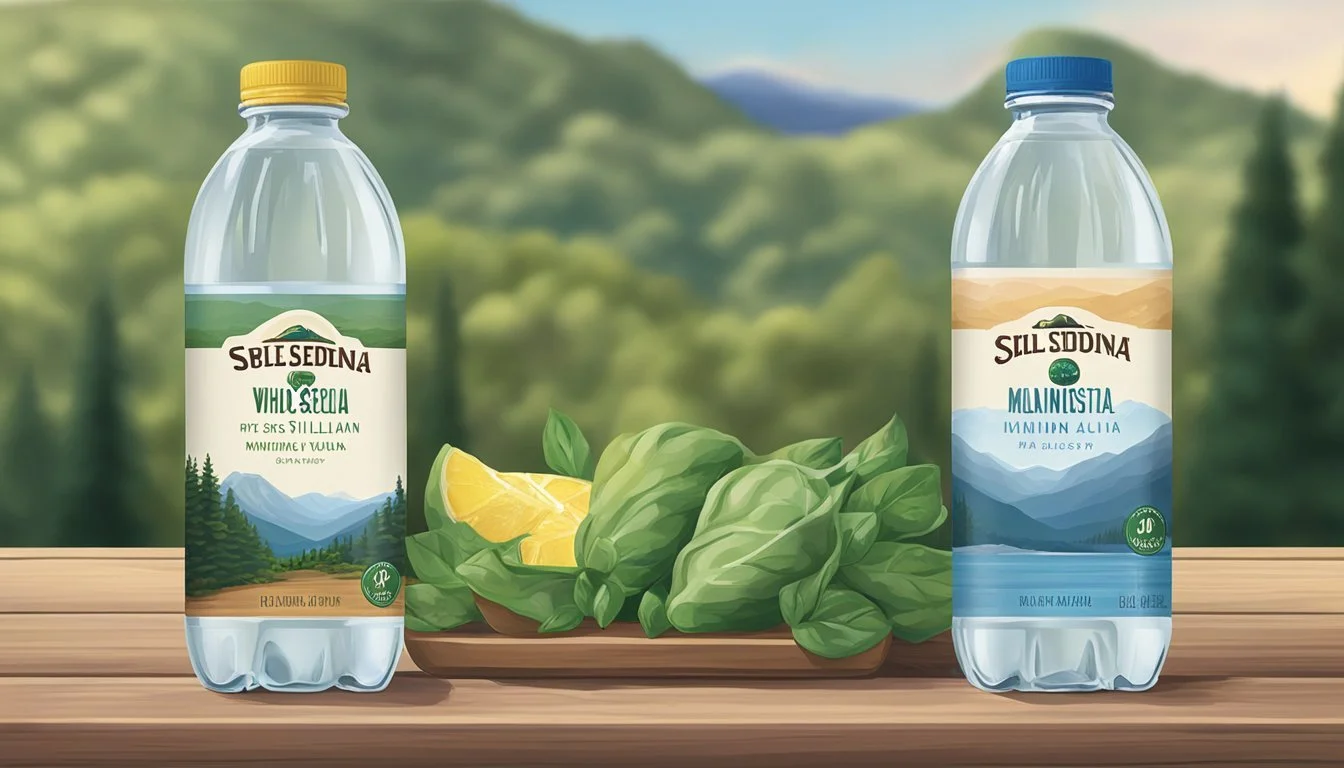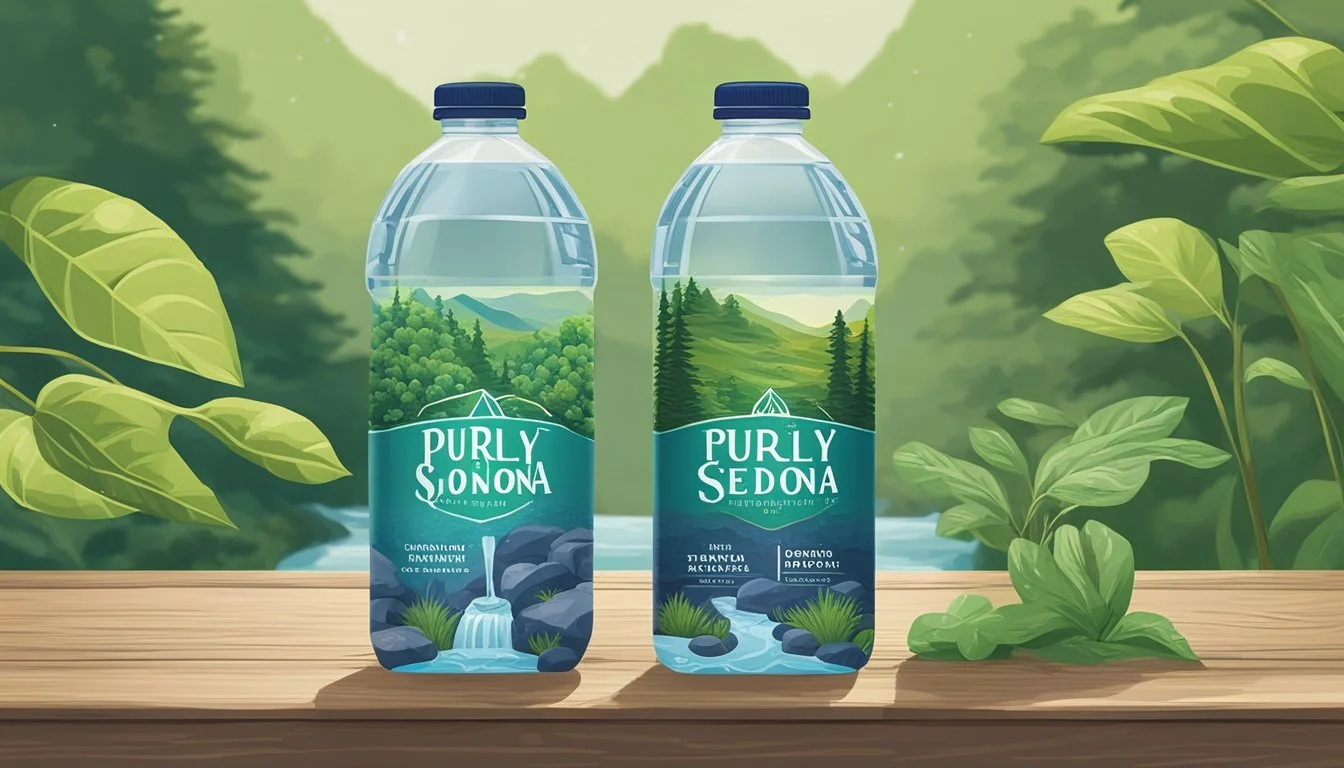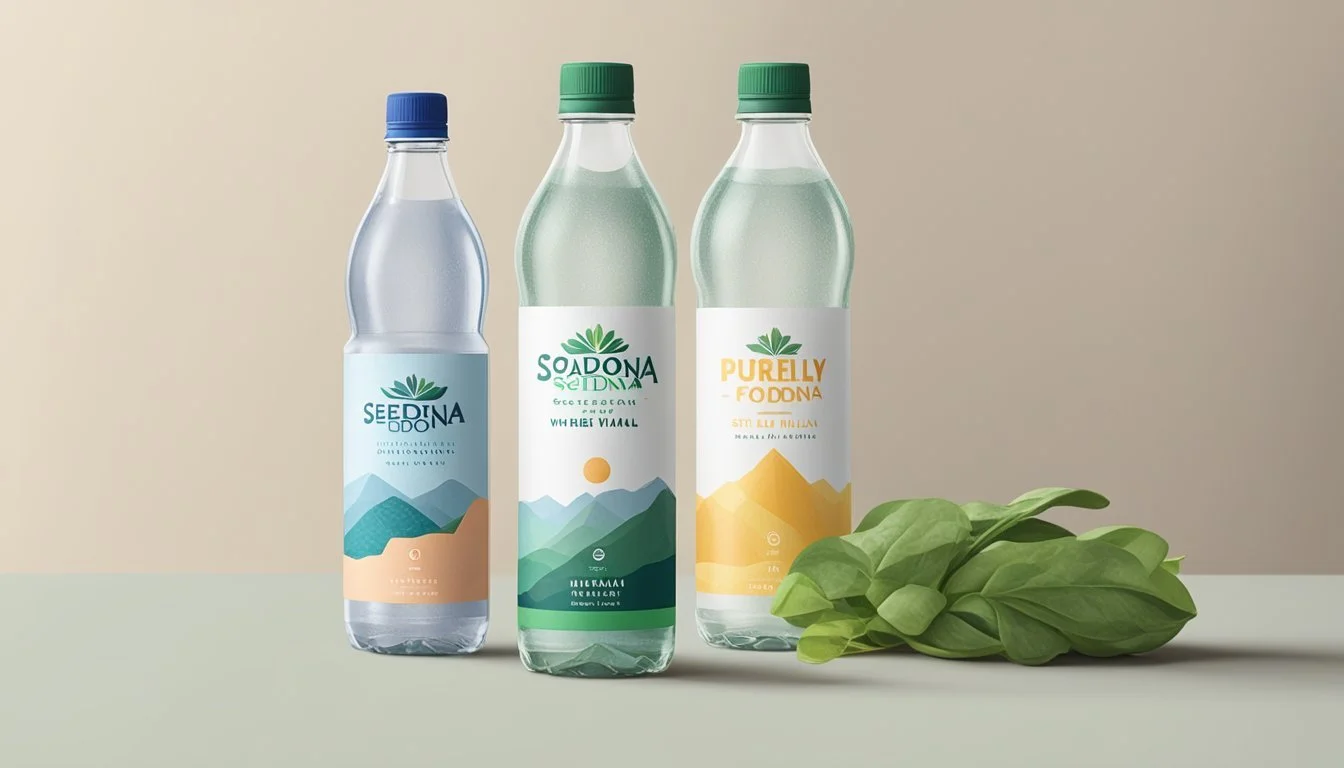Purely Sedona vs. Whole Foods Italian Still Mineral Water
Bottled Water Comparison
Choosing the perfect bottled water can be daunting, especially when comparing two premium options like Purely Sedona and Whole Foods Italian Still Mineral Water. Both brands promise unique qualities, making them top contenders for discerning consumers.
Purely Sedona, sourced from the pristine regions of Sedona, Arizona, offers a balanced taste with a distinct mineral composition. Known for its purity, it appeals to those requiring a refreshing and natural hydration experience.
Whole Foods Italian Still Mineral Water boasts a smooth, subtle flavor derived from its source in the rolling hills of Tuscany, Italy. Its delicate mineral content ensures a gentle, satisfying drink, making it a favorite for those seeking a premium water option.
Overview of Bottled Water Industry
The bottled water industry has seen remarkable growth, evolving to meet increasing consumer demand for convenient, high-quality hydration options. Key elements include the rise of various types of bottled water and the discerning preferences of customers.
Rise of Bottled Waters
The bottled water market emerged prominently in the mid-20th century. Its growth accelerated as consumers sought alternatives to tap water for health and convenience reasons.
Spring Water: Naturally sourced from underground springs, popular for its purity and natural mineral content.
Mineral Water: Contains specific amounts of minerals like calcium and magnesium, beneficial for health.
Sparkling Water: Carbonated for those who prefer a fizzy experience.
Still Water: Flat water, often chosen for its smooth, refreshing taste.
This diversification has allowed water brands to cater to varied consumer tastes and requirements, turning bottled water into a multi-billion dollar industry.
Consumer Preference for Quality and Taste
Consumers are increasingly selective, seeking bottled water that stands out in taste and quality.
Brands like Purely Sedona and Whole Foods Italian Still Mineral Water have gained loyal customers due to their unique qualities.
Purely Sedona is noted for its crisp and pure profile, bottled directly from American springs.
Meanwhile, Whole Foods Italian Still Mineral Water offers a distinct mineral-rich composition, often enhancing the flavor of food and wine.
This selective approach in choosing bottled water underscores the importance of both quality and taste in consumer preference, driving brands to uphold high standards and transparency in their product offerings.
Comparing Purely Sedona and Whole Foods Italian Still Mineral Water
Choosing between Purely Sedona and Whole Foods Italian Still Mineral Water involves considering factors such as origin, nutritional content, and taste. Both options offer unique features catering to different preferences.
Product Profiles
Purely Sedona:
Artesian spring water
Available in various sizes (1 lt, 500 ml)
Emphasizes natural mineral content for health benefits
Whole Foods Italian Still Mineral Water:
Imported still mineral water from Italy
Packaged in 33.8 fl oz bottles
Positioned as a high-quality option in Whole Foods Market
Source and Origin
Purely Sedona:
Sourced from artesian springs in Sedona, Arizona
Known for its pristine natural environment
Marketed for its purity and natural high mineral content
Whole Foods Italian Still Mineral Water:
Sourced from mineral springs in Italy
Bottled at the La Galvanina Spa Source in Rimini
Italian origin adds a cultural appeal associated with high quality
Nutrition and Ingredients
Purely Sedona:
Contains essential minerals like bicarbonate and calcium
Claims benefits for hydration and digestion
Natural mineral mix supports various health benefits
Whole Foods Italian Still Mineral Water:
Offers mineral water with a lower Total Dissolved Solids (TDS) content
Ingredients include naturally occurring minerals
Tested TDS content between 150-200; pH around 5 (slightly acidic)
Taste and Palate Experience
Purely Sedona:
Known for its clean and crisp taste
Mineral content may impart a slightly earthy note
Smooth mouthfeel, often preferred by those seeking a natural taste
Whole Foods Italian Still Mineral Water:
Taste influenced by subtler mineral content
Slight acidity due to its pH level, which may appeal to some
Often paired with meals for its refreshing quality without overpowering flavors
Quality and Purity
Purely Sedona and Whole Foods Italian Still Mineral Water present unique approaches to water sourcing and filtration, as well as varying measures to ensure contaminants are minimized and purity maximized.
Water Source and Filtration
Purely Sedona sources its water from natural springs in Sedona, Arizona. The water undergoes an intricate filtration process involving multiple stages such as sand filtration, carbon filtration, and microfiltration to remove impurities.
Whole Foods Italian Still Mineral Water is sourced from natural springs across Italy, known for their rich mineral content. The water is minimally processed to preserve its natural minerals, using techniques like UV treatment and microfiltration.
The origin of both waters and their filtration methods significantly influence their taste and quality.
Contaminants and Purity Assurance
Purely Sedona rigorously tests its water for contaminants. The results show that it maintains low levels of common pollutants, with particular attention to acidic properties in their sparkling variants. Regular testing ensures the absence of harmful substances.
Whole Foods Italian Still Mineral Water adheres to strict European standards, regularly testing for heavy metals, microorganisms, and other contaminants. The water consistently demonstrates high purity levels, benefiting from stringent regulations.
Both brands prioritize transparency and publish their water quality reports, allowing consumers to make informed choices about their water.
Mineral Content and Health Benefits
Purely Sedona and Whole Foods Italian Still Mineral Water offer distinct mineral compositions that provide various health benefits. Both brands balance essential minerals to support hydration, bone health, muscle function, and blood pressure regulation.
Essential Minerals and Electrolytes
Both Purely Sedona and Whole Foods Italian Still Mineral Water contain key minerals and electrolytes necessary for maintaining bodily functions.
Calcium: Vital for strong bones and teeth.
Magnesium: Helps muscle relaxation and nerve function.
Potassium: Controls fluid balance and heart rhythm.
Purely Sedona is known for a balanced mix of these minerals. Whole Foods Italian Still Mineral Water may have a higher mineral content balancing necessary bodily functions.
Health Impact of Mineral Composition
The balanced mineral content in both water brands contributes significantly to health.
Hydration: Electrolytes aid in better water retention.
Bone Health: Calcium strengthens bones, reducing the risk of osteoporosis.
Muscle Function: Magnesium and potassium support muscle contraction and relaxation.
Blood Pressure: Regulated by potassium and magnesium, lowering hypertension risk.
Mineral water consumption can thus offer a natural way to achieve these benefits, as observed in both brands’ profiles.
Packaging and Environmental Concerns
Both Purely Sedona and Whole Foods Italian Still Mineral Water utilize different materials and practices in their packaging, with varying impacts on sustainability and plastic waste.
Sustainable Materials and Practices
Purely Sedona packages its water in glass bottles. Glass is often considered more environmentally friendly compared to plastic because it is recyclable and doesn’t leach chemicals. The company sources its water from protected springs in Oak Creek Canyon, ensuring stringent environmental standards are met.
Whole Foods Italian Still Mineral Water, by contrast, typically comes in plastic bottles. While convenient, plastic is less sustainable due to its lower recycling rate and higher environmental footprint during production. Whole Foods has, however, made efforts to use recycled materials in some of its packaging, aiming to reduce its overall environmental impact.
Plastic Waste and Eco-Friendly Alternatives
Plastic waste is a major concern with bottled water. Purely Sedona’s use of glass bottles helps mitigate this issue by reducing the amount of single-use plastic in circulation. Recycling rates for glass are generally higher, making it a more eco-friendly choice.
Whole Foods' use of plastic bottles contributes to plastic waste. Even with initiatives to use recycled plastic, the environmental benefits are limited if the bottles are not recycled properly by consumers. Adopting more sustainable packaging, such as glass or biodegradable options, could further enhance their efforts to be more environmentally responsible.
Strategies focusing on reducing plastic waste are crucial in promoting a more sustainable future. Consumers are increasingly aware of the impact of their choices, making sustainable packaging a significant factor in their purchasing decisions.
The Significance of pH and Alkalinity
In evaluating Purely Sedona and Whole Foods Italian Still Mineral Water, it's essential to consider both pH balance and alkalinity. These factors play a crucial role in determining water quality and its potential impacts on health.
Understanding pH Balance
The pH level of water measures its acidity or alkalinity on a scale from 0 to 14.
Values below 7 indicate acidic water, while values above 7 indicate alkaline water.
Purely Sedona, for instance, is known for its acidic nature, whereas Whole Foods Italian Still Mineral Water tends to be more alkaline.
pH balance affects taste and may influence bodily functions. Neutrally pH-balanced water (around 7) is often perceived as more palatable and less likely to disrupt the body's natural pH levels.
The Role of Alkalinity in Bottled Water
Alkalinity measures water’s capacity to neutralize acids and is influenced by the presence of bicarbonates, carbonates, and hydroxides.
Higher alkaline water can help buffer acidity in the stomach and maintain an optimal pH balance in the body.
Whole Foods Italian Still Mineral Water, with its higher alkalinity, may offer better acid-neutralizing benefits compared to Purely Sedona.
In addition, alkaline water is often marketed for its potential benefits in aiding digestion and reducing acid reflux symptoms.
Ultimately, while pH and alkalinity are significant, the best choice for bottled water depends on individual preferences and health needs.
Carbonation: Sparkling vs. Still Water
Carbonation differentiates sparkling from still water by introducing carbon dioxide for added effervescence. Understanding the mechanics and sensory impact of this carbonation will clarify their distinct characteristics.
Types of Carbonated Waters
Sparkling water contains carbon dioxide, resulting in a fizzy texture. This carbonation can be naturally occurring or added during bottling.
Types:
Natural Sparkling Water: Carbonated from underground springs.
Artificially Carbonated Water: Carbon dioxide is added during processing.
Still water lacks carbonation, feeling smoother on the palate. This includes tap water, filtered water, and some mineral waters without added bubbles.
Sensory Profile of Effervescence
Effervescence in sparkling waters creates a lively, tingling sensation. This fizzy texture not only refreshes but also heightens the perception of flavors.
Sparkling Water Profile:
Taste: Enhanced by minerals like calcium, magnesium, and potassium.
Mouthfeel: Bubbly and invigorating, stimulating the senses.
Still Water Profile:
Taste: Pure and smooth, emphasizing water's natural flavor.
Mouthfeel: Flat and calm, ensuring a straightforward sensory experience.
These sensory distinctions between sparkling and still waters significantly influence consumer preference, highlighting the importance of carbonation in bottled water choices.
Water Branding and Consumer Choice
Water branding plays a significant role in shaping consumer preferences and perceptions. The designations of luxury and premium labels, along with the influence of water sommeliers, guide buyers towards certain brands.
Designation of Luxury and Premium Labels
Brands like Purely Sedona and Whole Foods Italian Still Mineral Water often use luxury and premium labels as selling points. Purely Sedona focuses on its artisanal sourcing from a registered spring, emphasizing purity and natural mineral content.
Whole Foods Italian Still Mineral Water markets itself as a budget-friendly yet high-quality alternative. By highlighting their origins and mineral compositions, these brands attract consumers looking for distinct, high-end hydration experiences.
Packaging, branding, and marketing efforts amplify this appeal. In fine dining establishments, the presentation of a luxury water brand can enhance the dining experience, much like a finely selected wine.
The Role of Water Sommeliers
Water sommeliers are experts who introduce and endorse premium bottled waters. They educate consumers and establishments about the distinct qualities of various types of water.
These professionals help in the selection of waters that complement specific meals, enhancing the dining experience. For brands like Purely Sedona, having a water sommelier endorse their product can amplify its luxury status and legitimacy.
Water sommeliers often conduct tastings and provide detailed flavor profiles, mirroring the practices of wine sommeliers. Their role reinforces the premium nature of bottled water brands, guiding consumer choice based on informed preferences.
Conclusion
Purely Sedona and Whole Foods Italian Still Mineral Water each offer unique benefits for consumers, influenced by factors like price, taste, and pH level.
Final Assessment of Purely Sedona vs. Whole Foods Italian Still Mineral Water
Purely Sedona stands out for its affordability, making it accessible to a broader audience. It is known for its focus on purity and local heritage, providing consumers with a sense of regional connection. Its price range from $1.50 to $3.00 per bottle makes it a budget-friendly option. However, Purely Sedona sparkling water is acidic, which may be a consideration for health-conscious buyers.
Whole Foods Italian Still Mineral Water is positioned as a premium option with a distinct taste profile. It offers a clean and pure taste with a neutral pH balance, making it an excellent companion for food, as it does not overpower flavors. The emphasis on high purity without a prominent mineral taste appeals to those seeking a subtle yet high-quality hydration experience.
Both options cater to different tastes and budgets, providing varied choices to match consumer needs.


